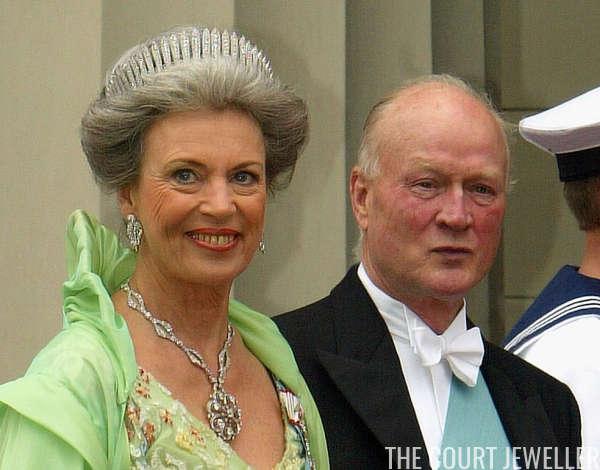 |
| Princess Benedikte, with Prince Richard, wears the Sayn-Wittgenstein-Berleburg Fringe Tiara at the wedding of their nephew, Crown Prince Frederik of Denmark, in Copenhagen in May 2004 (Pascal Le Segretain/Getty Images) |
Since the sudden and unexpected death of Prince Richard of Sayn-Wittgenstein-Berleburg a few weeks ago, the royal world has focused once more on some of the strange and disconcerting questions that surround the inheritance of the family’s titles and estates. One of the sparkliest of the family’s possessions is today’s tiara: the Sayn-Wittgenstein-Berleburg Fringe.
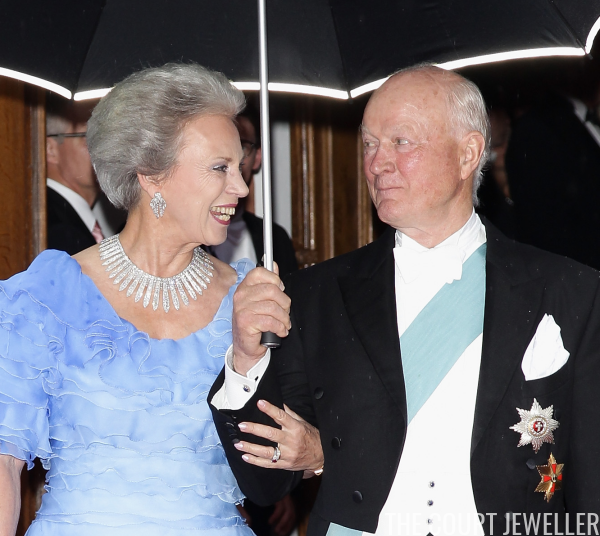 |
| Princess Benedikte, with Prince Richard, wears the fringe tiara as a necklace at the wedding of their daughter, Princess Nathalie, in Bad Berleburg in June 2011 (Andreas Rentz/Getty Images) |
The Sayn-Wittgenstein-Berleburg family, which hails from the central part of Germany, used to be rulers of a small principality. Today, they’re prominent mainly because of the 1968 marriage between Richard, the 6th Prince of Sayn-Wittgenstein-Berleburg, and Princess Benedikte of Denmark (daughter of King Frederik IX and sister of Queen Margrethe II). The family’s fringe tiara is from two generations earlier. It was made for Prince Richard’s grandfather (also named Richard) by Koch in 1905. He gave the tiara to his new bride, Princess Madeleine of Löwenstein-Wertheim-Freudenberg, who bequeathed the tiara to her grandson, Prince Richard, in 1976. The very sparkly fringe can also be taken off its frame and worn as a necklace.
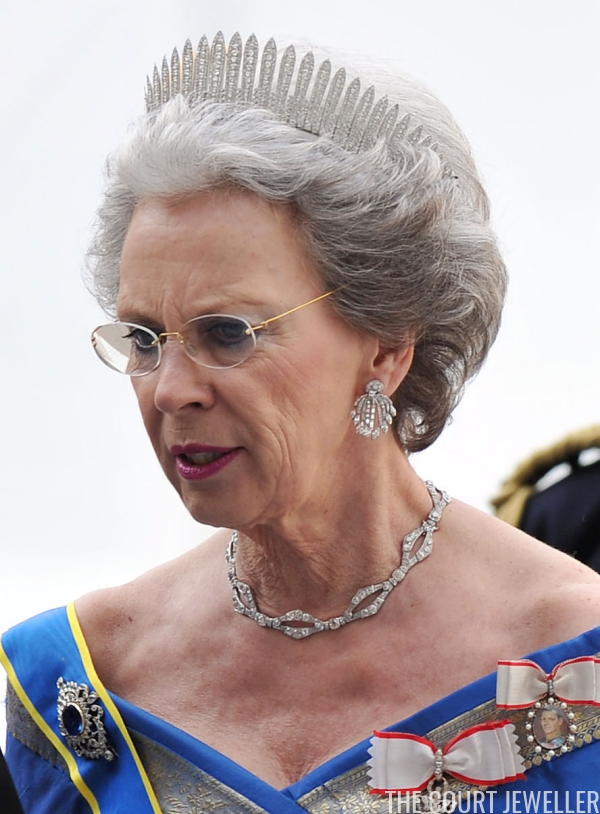 |
| Princess Benedikte wears the tiara, plus her mother’s diamond earrings, Queen Alexandrine’s diamond necklace, and Princess Thyra’s diamond and sapphire brooch, at the wedding of Crown Princess Victoria of Sweden in Stockholm, June 2010 (Pascal Le Segretain/Getty Images) |
The history of the family is unusually complicated. Richard’s father, Prince Gustav Albrecht, served in the German military in World War II and went missing during a mission. He was never found, and his body was never recovered, but the family waited nearly 25 years — until the birth of Richard and Benedikte’s son, also named Gustav — to have him declared officially dead.
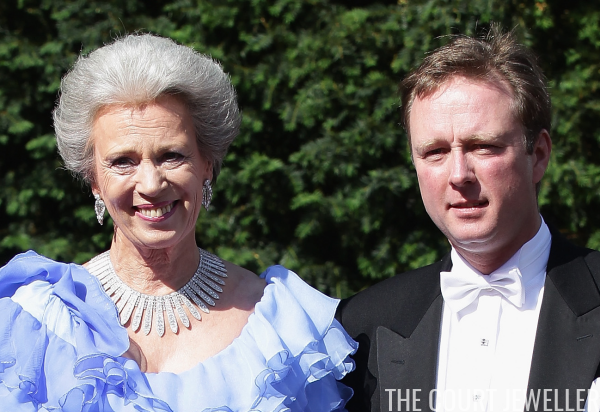 |
| Princess Benedikte, with Prince Gustav, wears the fringe tiara as a necklace at the wedding of her daughter, Princess Nathalie, in Bad Berleburg in June 2011 (Andreas Rentz/Getty Images) |
Before disappearing, Gustav Albrecht made a will that has become rather infamous. He didn’t name Richard as his heir — instead, he willed his property to his future (unborn, at that point imaginary) grandson. (This was apparently a fairly common maneuver, in part to avoid death duties.) But there was a catch. The will stipulates that said future grandson could only marry a specific woman: she’d need to be protestant, of noble descent, and (the extremely gross kicker) “aryan.” If he married anyone who didn’t fulfill these three conditions, the grandson would lose all of the estate. (One of the best breakdowns of the complicated SWB inheritance situation comes from a wonderful fellow blogger, Sydney. You can read it over here!)
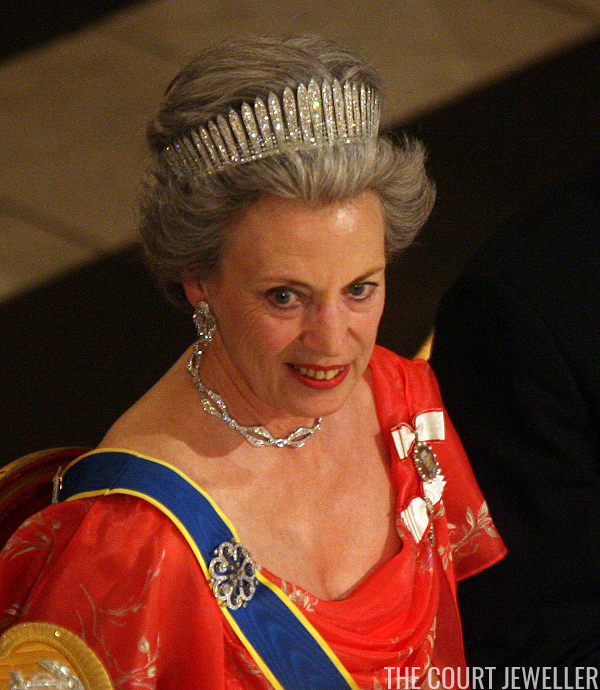 |
| Princess Benedikte wears the fringe tiara, plus her mother’s diamond earrings, Queen Alexandrine’s diamond necklace, and her floral brooch, during a state visit from the Swedish royal family to Denmark, May 2007 (Niels Henrik Dam/Getty Images) |
The minute that the family had Gustav Albrecht legally declared dead in 1969, baby Prince Gustav immediately inherited the family’s estates, including their schloss in Bad Berleburg. He didn’t get the title — that’s used only in pretense now and has no legal standing in Germany, so his father, Prince Richard, got to keep it during his lifetime. But now, following the death of his father, he has the title, too — he’s the 7th Prince of Sayn-Wittgenstein-Berleburg. Prince Gustav is now head of the noble house, the holder of the family’s title, and the legal owner of the estates.
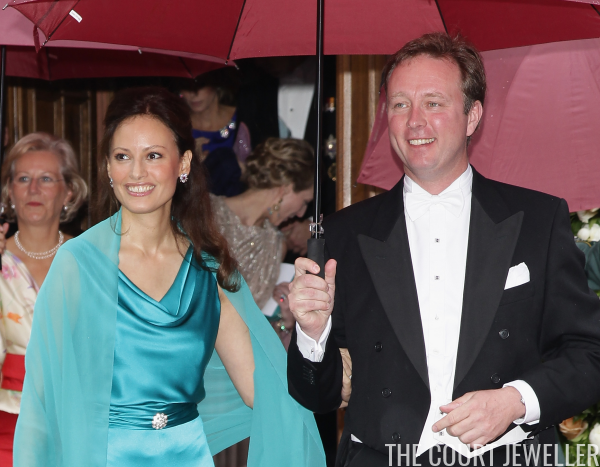 |
| Prince Gustav and Carina Axelsson attend the wedding of his sister, Princess Nathalie, in Bad Berleburg in June 2011 (Andreas Rentz/Getty Images) |
Seems great, right? Not so fast. The big problem for Prince Gustav is this: his longtime partner, Carina Axelsson, isn’t protestant, noble, or “aryan.” If they marry, he would violate the terms of the will created by his long-dead grandfather. Carina would get to be the Princess of Sayn-Wittgenstein-Berleburg, but they would lose the family fortune and properties to the next person in line who fulfilled the will’s conditions. (That’s a cousin, Prince Bernhart of Sayn-Wittgenstein-Hohenstein.)
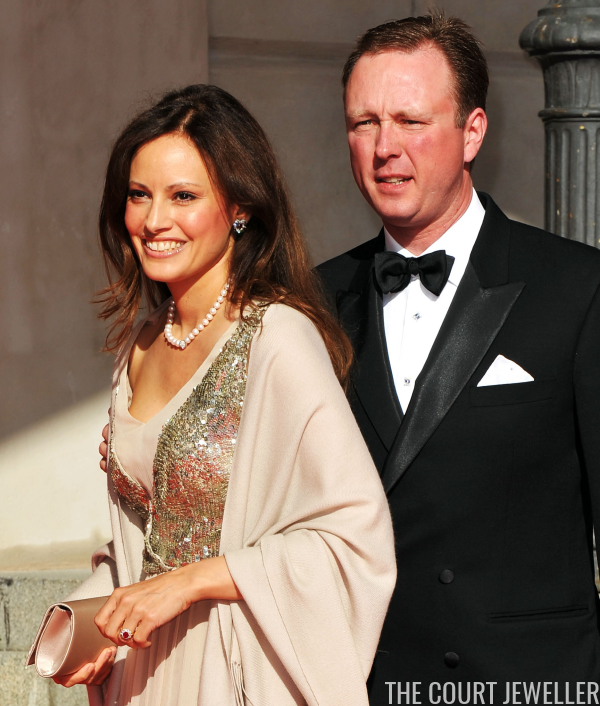 |
| Prince Gustav and Carina Axelsson attend Crown Princess Victoria of Sweden’s pre-wedding dinner in Stockholm, June 2010 (Pascal Le Segretain/Getty Images) |
Gustav clearly does not want to give up his family home or the other parts of his inheritance. So he and his family, including Princess Benedikte and the rest of the Danish royals, have dealt with the situation rather simply. He and Carina live, fully recognized by the SWB family and the Danish monarchy, as husband and wife. She’s even the chatelaine of the family schloss. They’ve just never gotten married.
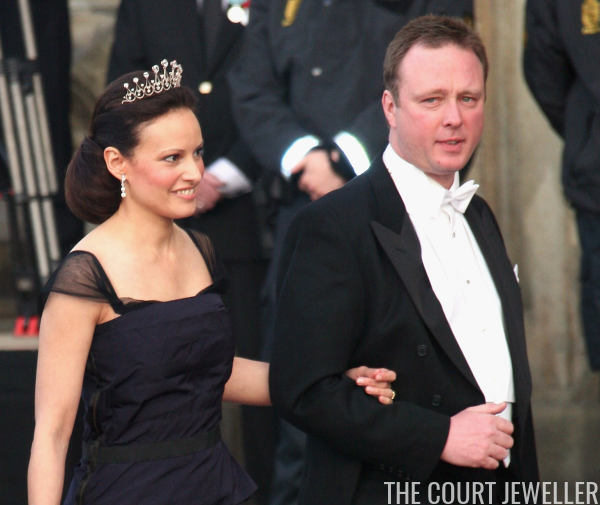 |
| Prince Gustav and Carina Axelsson attend a gala celebrating the 70th birthday of his aunt, Queen Margrethe II of Denmark, in April 2010 (Julien M. Hekimian/Getty Images) |
All of this brings us back to the tiara at the heart of today’s post. Since her marriage to Prince Richard, Princess Benedikte has been the exclusive wearer of the family’s fringe tiara. It is one of the few tiaras that she has not shared with her daughters, Princess Alexandra and Princess Nathalie, or her de facto daughter-in-law, Carina. Don’t feel too bad for them, though: Benedikte also got some fabulous tiaras from her mother, Queen Ingrid, and she’s been generous in letting her family members wear those. Carina has also worn other tiaras, including the diamond sparkler pictured above, that don’t come from Benedikte’s collection at all.
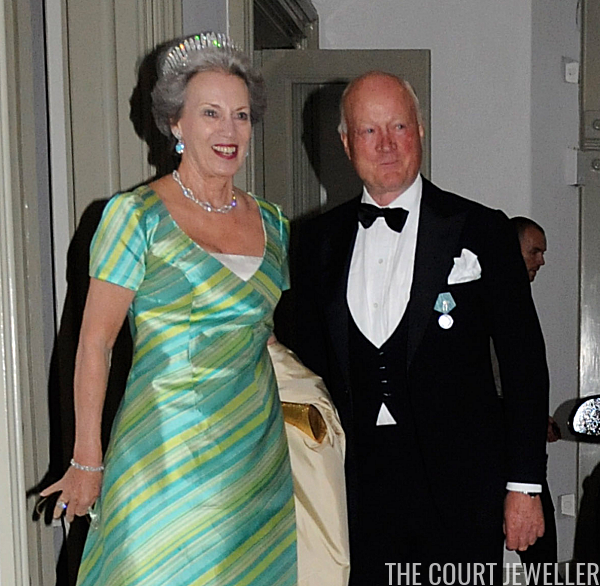 |
| Princess Benedikte, with Prince Richard, wears the fringe tiara at Prince Henrik of Denmark’s 75th birthday dinner at Fredensborg Castle, May 2009 (Torsten Laursen/Getty Images) |
But what happens to the fringe tiara now? It doesn’t automatically go to the holder of the title or the owner of the family estates — remember that Richard inherited it from his grandmother — so it’s possible that Richard willed it to Benedikte, and that we’ll see her continue to use it exclusively. It’s also possible, though, that he left it to Gustav. Will we see Carina wear the tiara next time she attends a major royal event in Denmark? (Even though they’re not legally married, she is recognized fully as Gustav’s partner, and she attends royal events in tiaras and jewels.) Seeing her in the grandest of the family’s tiaras would be just the latest in a long line of symbolic gestures that show that the family accepts her as Gustav’s partner — even if she’s not legally his wife.
Leave a Reply